Do you live in a place that doesn’t have a good local camera club where you can share ideas with other photographers, hear good speakers, or learn about great shooting locations nearby? Why not think about starting a camera club? That’s exactly what I did with the help of another person here in Tyler, Texas. We started talking about what we wanted to have in a camera club and then set out to create our ideal. After several months of preparation, we held our first meeting. Twenty-five people showed up– more than we expected. Since then, numerous other members have signed up online. (Click here to view our list of camera clubs)
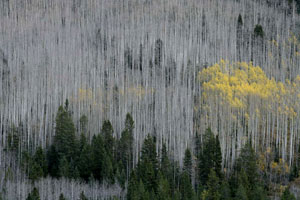
How do you go about starting a camera club? Before you begin, you need to realize you’re taking on a large task; there will be a bit of work involved. The first thing on your plate is to find a place to hold the monthly meetings. Check to see where other clubs and organizations in your area meet and contact those places. Almost all charge a fee. Some junior colleges have rooms available for free or at low cost.
If you’re able to find a sponsor at a museum or gallery with space, either would be a good option. I know of two clubs in Colorado that meet in a room at a local fire station. Others use libraries. (We were able to find a sporting goods store that provided a free room, one with a projector. Winner!)
I’m not sure what the annual costs are for most photography clubs, but expenditures can’t run too high, since membership fees have to stay within a range of $15 to $20 per member. Once you’ve arranged for your space, you need to select a day of the month and starting time when you’ll conduct monthly meetings. (For us, it’s the second Thursday at 7 p.m. We might end up needing to find another place, since it looks like we’re going to outgrow our room.)
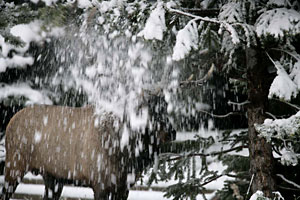
Once you’ve established your meeting details, you’ll want to put together a basic website that advertises where and when you meet and what your club is like. You need to establish a place on the Internet so that potential new members have a place to check out what the club is all about. There are several additional ways to advertise your club.
You may create a flyer that announces the advent of your organization, its meeting times and location, a brief statement about the club’s mission, and contact information including names, e-mail addresses, phone numbers, and web addresses. Flyers can be placed at camera stores, photography labs, and any other place that caters to photographers. Also, send a press release to your local newspaper for their calendar of upcoming events.
Just about every paper has a community page where public service announcements are listed at no cost. You might even check the websites of your local television stations to see if they have an events calendar you can access. Because you’ll need to resubmit announcements to the papers and TV stations every month, you’ll want to seek out a volunteer to help you. However, be warned that in the beginning, you and the others who are helping you establish your club will have to do everything.
Your next major job will involve lining up a series of speakers. The longer before the actual presentation dates that you can schedule your guests, the better. We were able to use a variety of techniques to find ours—visiting previous contacts, taking flyers to local camera stores/labs and having people from those places offer to do a program, contacting local colleges, and also consulting a list of speakers used by the local Audubon club. We had speakers for six of the first seven meetings scheduled before our second meeting. As you find one speaker, s/he can sometimes lead you to someone else. Once you have your first meeting, the attendees will come up with ideas for speakers. Some of your members might even be willing and qualified to offer good programs themselves.
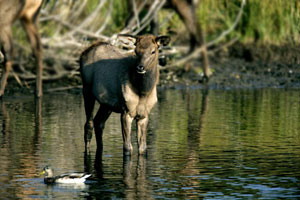
Copyright © Andy Long
Greetings! It’s a beautiful day in the Colorado high country as a young elk cow eyes a passing mallard.
At our first meeting, we asked the people to fill out a survey detailing what type of speakers they wanted, where their interests lay, field trip ideas they had, and more. A survey helps ensure the organization is heading in the direction the people in the club want to take. Our results told us that the two most popular program subjects were a question-and-answer session on a chosen topic in which members and guest photographers would address the questions, and a presentation on Photoshop or other related computer programs for post-production work. In response to our question about field trips, we learned that a majority of our members were interested in that kind of activity. So, we set one up for the following Saturday, and it was well attended. Field trips are a great way for members to get to know each other while they’re enjoying a day of shooting with others who have the same interests. You might want to schedule one per month or every other month. Again, look for a volunteer to work on setting these up and acting as the official contact. Try to get others involved to minimize the workload.
There are two kinds of formal structure a photography club can have–non-competitive or competitive. I’ve attended both types of clubs and each has its plusses and minuses. Some people are very competitive and want to be rewarded for their efforts, even if the prize is nothing more than a ribbon. If you want to establish a competitive club, you have a few choices as to how to proceed. Having been invited to speak at quite a few camera clubs over the years, I’ve been asked many times to do the judging and critiquing of the images submitted for that night. I was also invited to judge annual contests. When a guest speaker does the judging, the group has the views and opinions of an outside voice to advise them how to improve the photos or who to name as the winners. However, some clubs opt to have members do the judging. They may have a panel of one, two or three judges, or they may ask everyone to view the submissions and submit a silent vote before the winners are announced.
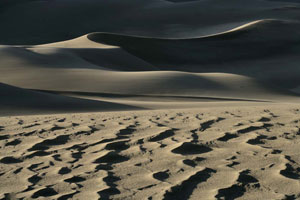
Copyright © Andy Long
Early morning light creates some interesting light and shadow contrast at the Great Sand Dunes National Park.
Our new club is non-competitive. Members send in images for a theme segment and an open category. The images are then projected and other members provide gentle critique. They comment on the composition, lighting, or other techniques. The people present learn quite a bit as they listen to critiques and suggestions for a number of images. Of course, the person conducting the critique needs to be qualified, someone with a strong photography background and experience.
Eventually, you’ll need to determine if your members are interested in joining one of the regional or national organizations. The primary national photo club organization is Photographic Society of America (PSA). Regional groups include New England Council of Camera Clubs, Gulf States Camera Club Council, among others. There are also local groups within a state or large metro area. Each of these organizations can be of help when you’re starting a club. They’ll be glad to give you ideas, and they may provide special offers to your members. Other sources for special deals are plentiful. For example, Apogee Photo offers discounts to photography club members for online classes from time to time; photo paper companies offer product discounts; magazines and organizations also offer membership discounts. Access to special deals adds to the value of becoming a member of a club.
If you can find a good photography club in your area, join it. You’ll learn as you meet others with the same interest. Your photography will improve over time, and you’ll even find out about great shooting locations near you. On the other hand, if you can’t find a good club, why not start one? Creating a great organization isn’t as difficult as you think when there are numerous photographers in your area who want to get together for fun and new ideas.
by Andy Long

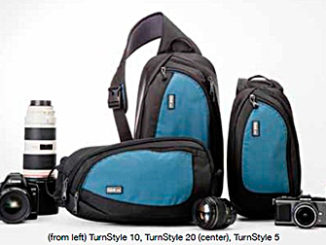


Is the East TX Camera Club defunct at this point? I am starting a Photography Club in Shreveport and was wanting to connect with someone about details and possible partnerships.